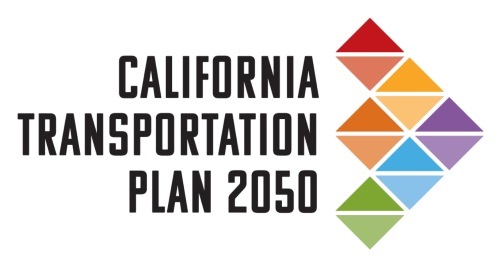The California Department of Transportation – known as Caltrans – unveiled its California Transportation Plan or CTP 2050 that seeks to establish a 30-year roadmap for improving mobility and accessibility statewide while significantly reducing greenhouse gas or GHG emissions related to transportation.
[Above graphic via Caltrans.]
By 2050, the agency said in a statement that California’s transportation system would need to support an estimated 45 million residents with an integrated, sustainable network of mobility options that provide safe, convenient and reliable access to jobs, education, health care and other services that improve quality of life in all areas of the state.

Yet Caltrans added that California must do this while also achieving its goal of reducing GHG emissions from transportation to 80 percent below 1990 emissions levels by 2050. To make this a reality, Caltrans and local transportation agencies identified eight priorities in the CTP 2050 to guide policy and budget decisions and transportation planning in the years ahead:
- Safety – Provide a safe and secure system designed to eliminate transportation-related fatalities and serious injuries and withstand natural disasters.
- Climate – Achieve statewide GHG emission reduction targets and make the state’s transportation system more resilient to climate change.
- Equity – Eliminate transportation barriers and expand access across all communities, particularly in low-income neighborhoods and communities of color and for people with disabilities.
- Accessibility – Improve mobility across all modes of transportation, including transit, walking, biking and vehicle travel so all Californians can safely and easily reach their destination.
- Quality of Life and Public Health – Enable vibrant, healthy communities through expanded walking and bicycling paths and convenient transit options to reduce GHG emissions and dependence on driving.
- Economy – Support a vibrant, resilient economy by improving freight movement and access to housing and jobs.
- Environment – Reduce the negative impacts of transportation by expanding low-carbon and sustainable mobility options.
- Infrastructure – Maintain a reliable transportation system that is sustainable and resilient to climate change and natural disasters.
Caltrans added that the CTP 2050 places particular emphasis on advancing racial and economic justice by redirecting resources to marginalized and underinvested communities and amplifying voices “historically excluded” from the transportation decision-making process.
The plan emphasizes the importance of engagement and careful planning to ensure all Californians enjoy the benefits of transportation projects and are not subject to negative project impacts, particularly in historically underserved and underrepresented communities, such as Black and Latino neighborhoods.
Meanwhile, improving engagement in transportation planning at the neighborhood level will limit those communities’ exposure to pollution from the transportation system, provide expanded mobility options, and enhance access to jobs, education, healthy food, and transit, Caltrans said.
 States
States
NCDOT Staff Participate in ‘Explosive’ Technical Training
December 19, 2025 States
States

